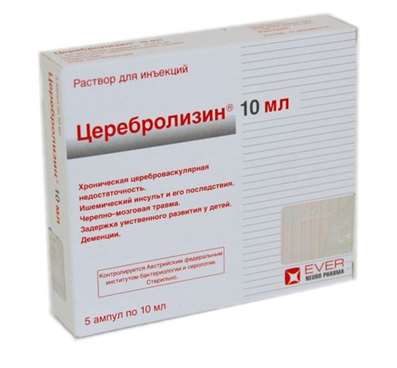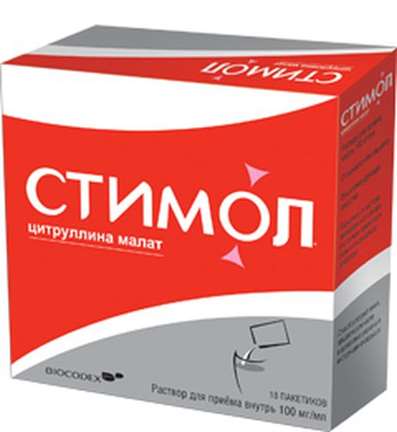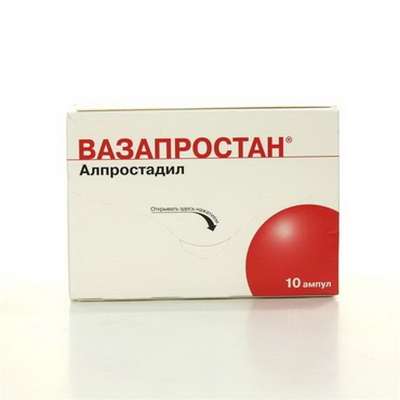Instruction for use: Vero-Ondansetron
I want this, give me price
Dosage form: Solution for injection; film coated tablets
Active substance: Ondansetron*
ATX
A04AA01 Ondansetron
Pharmacological groups:
Antiemetic means and preparations
Serotonergic agents
The nosological classification (ICD-10)
R11 Nausea and vomiting: Postoperative vomiting; Nausea; Vomiting; Vomiting in the postoperative period; Vomiting medication; Vomiting in the background of radiation therapy; Vomiting uncontrollable; Vomiting in radiation therapy; Persistent vomiting; Indomitable vomiting; Postoperative nausea; Vomiting with chemotherapy; Vomiting of the central genesis; Vomiting with cytotoxic chemotherapy; Persistent hiccups; Repeated vomiting
Z100 * CLASS XXII Surgical practice: Abdominal surgery; adenomectomy; Amputation; Coronary angioplasty; Angioplasty of the carotid arteries; Antiseptic skin treatment for wounds; Antiseptic Hand; Appendectomy; atherectomy; Balloon coronary angioplasty; Vaginal hysterectomy; The coronary bypass; Interventions in the vagina and cervix; Interventions on the bladder; Intervention in the mouth; Restoration and reconstructive surgery; Hand hygiene of medical personnel; Gynecologic surgery; Gynecological intervention; Gynecological surgery; Hypovolemic shock during operations; Disinfection of purulent wounds; Disinfection of wounds edges; Diagnostic intervention; Diagnostic procedures; Cervical Diathermocoagulation; Long-surgery; Replacing the fistula catheters; Infection in orthopedic surgery; Artificial heart valve; cystectomy; Short-term outpatient surgery; Short-term operation; Short surgical procedures; Krikotireotomiya; Blood loss during surgery; Bleeding during surgery and in the postoperative period; Kuldotsentez; laser photocoagulation; laser coagulation; retinal laser coagulation; Laparoscopy; Laparoscopy in Gynecology; CSF fistula; Small gynecological operations; Small surgical procedures; Mastectomy and subsequent plastic; mediastinotomy; Microsurgical operations on the ear; Mukogingivalnye operation; suturing; Minor surgery; neurosurgical operation; Immobilization of the eyeball in ophthalmic surgery; testectomy; pancreatectomy; Perikardektomiya; The period of rehabilitation after surgery; The period of convalescence after surgery; Percutaneous transluminal coronary angioplasty; Pleural thoracentesis; Pneumonia postoperative and posttraumatic; Preparation for surgical procedures; Preparation for surgery; Preparation of the surgeon's hands before surgery; Preparation of the colon for surgical procedures; Postoperative aspiration pneumonia in neurosurgical and thoracic surgery; Postoperative nausea; Postoperative bleeding; postoperative granuloma; postoperative shock; The early postoperative period; myocardial revascularization; Radiectomy; gastric Resection; bowel resection; uterine Resection; liver Resection; enterectomy; Resection of part of the stomach; Reocclusion of the operated vessel; Bonding tissues during surgical procedures; Removal of sutures; Condition after eye surgery; Condition after surgery; Condition after surgery in the nasal cavity; Condition after gastrectomy; Status after resection of the small intestine; Condition after tonsillectomy; Condition after removal of the duodenum; Condition after phlebectomy; Vascular surgery; Splenectomy; Sterilization of surgical instruments; Sterilization of surgical instruments; sternotomy; Dental surgery; Dental intervention in periodontal tissues; strumectomy; Tonsillectomy; Thoracic surgery; Thoracic surgery; total gastrectomy; Transdermal intravascular coronary angioplasty; Transurethral resection; Turbinektomiya; Removal of a tooth; cataract surgery; Removal of cysts; tonsillectomy; Removal of fibroids; Removing the mobile primary teeth; Removing polyps; Removing broken tooth; Removal of the uterus body; Removal of sutures; Fistula likvoroprovodyaschih ways; Frontoetmoidogaymorotomiya; Surgical infection; Surgical treatment of chronic limb ulcers; Surgery; The surgery in the anal area; The surgery on the colon; Surgical practice; The surgical procedure; Surgical interventions; Surgery on the gastrointestinal tract; Surgical procedures on the urinary tract; Surgical procedures on the urinary system; Surgical intervention of the genitourinary system; Surgical procedures on the heart; Surgical manipulation; surgery; Surgery on the veins; Surgical intervention; Vascular surgery; Surgical treatment of thrombosis; Surgery; cholecystectomy; Partial gastric resection; hysterectomy; Percutaneous transluminal coronary angioplasty; Percutaneous transluminal angioplasty; Coronary artery bypass; tooth Extirpation; Extirpation of milk teeth; pulpectomy; pulsative cardiopulmonary bypass; tooth Extraction; teeth Extraction; cataract extraction; Electrocoagulation; endourological intervention; episiotomy; Etmoidotomiya; Complications after tooth extraction
Composition and release form
1 tablet contains ondansetron 4 or 8 mg, in a contour blister pack of 5 or 10 pcs., In a cardboard bundle 1 package or in a bank of dark glass 5 pcs (8 mg).
1 ampoule of dark glass or a bottle with 2 and 4 ml solution for injection - 4 or 8 mg respectively; In a cardboard bundle 5 ampoules or 1 bottle.
Pharmachologic effect
Mode of action - antiemetic.
Selectively blocks serotonin 5-HT3 receptors of neurons of the central nervous system and peripheral nervous system.
Pharmacodynamics
Prevents development and oppresses the gag reflex, eliminates nausea and vomiting caused by the release of serotonin.
Pharmacokinetics
With the IM introduction of Cmax in the plasma is achieved within 10 minutes. The distribution is the same for both in / m and / in the injections. Binding to proteins - 70-76%. Metabolised in the liver. With urine in an unchanged form, less than 5% of the drug is released. T1 / 2 with parenteral administration is 3 hours, in elderly patients - 5 hours, with severe hepatic insufficiency - 15-20 hours, with impaired renal function (Cl creatinine less than 15 ml / min) increases by 4-5 hours.
Indication for the Vero-Ondansetron
Nausea and vomiting (warning and treatment) against the background of cytostatic chemotherapy, radiation therapy, in the postoperative period.
Contraindications
Hypersensitivity, pregnancy, breast-feeding, children under 2 years of age (safety and efficacy not established).
Application in pregnancy and breastfeeding
Contraindicated. At the time of treatment should stop breastfeeding.
Side effects
From the nervous system and sensory organs: headache, dizziness, movement disorders, convulsions; Temporary violation of visual acuity.
From the cardiovascular system and blood (hematopoiesis, hemostasis): arrhythmia, bradycardia, pain in the chest, in some cases with depression of the ST segment, arterial hypotension.
On the part of the intestine: hiccough, dry mouth, diarrhea or constipation, a transient increase in the level of aminotransferases.
Allergic reactions: urticaria, bronchospasm, laryngospasm, angioedema, anaphylaxis.
Local reactions: pain, burning and redness at the injection site.
Other: a feeling of heat, a rush of blood to the face, hypokalemia.
Interaction
When used with enzymatic inducers of cytochrome P450 (CYP2D6 and CYP3A) - barbiturates, carbamazepine, glutetimide, griseofulvin, nitrous oxide, papaverine, phenylbutazone, phenytoin (and other hydantoins), rifampicin, tolbutamide and P450 enzyme inhibitors (CYP2D6 and CYP3A) - Allopurinol, macrolide antibiotics, antidepressants (MAO inhibitors), chloramphenicol, cimetidine, diltiazem, disulfiram, valproic acid, sodium valproate, erythromycin, fluconazole, fluoroquinolones, isoniazid, ketoconazole, lovast Tin, metronidazole, omeprazole, propranolol, quinidine, quinine, verapamil requires caution.
Dosing and Administration
The mode of administration and dosage regimen are selected in the range of 8-32 mg / day in accordance with the criteria below.
Inside. Adults with nausea and vomiting in the background of radio or chemotherapy - 8 mg 1-2 hours before the beginning of the antitumor therapy and subsequent ingestion of another 8 mg after 12 hours. To prevent late (after 24 hours) or prolonged vomiting continue to receive 8 mg twice a day for 5 days after the end of the course of antitumor therapy. To enhance the effect, a single dose can be increased to 24 mg and administered concomitantly with 12 mg of dexamethasone phosphate (as sodium salt) 1-2 hours before the start of chemotherapy. To prevent late (after 24 hours) or prolonged vomiting should continue to take 8 mg twice a day for 5 days after the end of the course of antitumor therapy.
Children, IV, immediately before chemotherapy at a dose of 5 mg / m2, followed by ingestion of 4 mg in 12 hours, after the end of the course of chemotherapy, continue taking ondansetron in a dose of 4 mg 2 times a day for 5 days.
Adults with nausea and vomiting on the background of moderately emetogenic chemo- and radiotherapy IV (slowly), IM - 8 mg (immediately before chemotherapy and radiotherapy).
With highly emetogenic chemotherapy, 8 mg immediately before the introduction of the emetogenic drug, and then 2 more intravenous injections of 8 mg, each administered 2-4 hours or as a continuous infusion (24 mg) at a rate of 1 mg / h in For 24 hours In doses of 16-32 mg, administration is possible only by IV infusion immediately before the start of chemotherapy (for at least 15 minutes), after preliminary dissolution of the drug in 50-100 ml of physiological saline or other compatible infusion solution. The effect enhances the additional administration (before chemotherapy) of dexamethasone phosphate (in the form of sodium salt) at a dose of 20 mg iv once.
If nausea and vomiting occur more than 24 hours after the start of therapy, the drug is recommended to be administered orally 8 mg twice a day.
Adults for the prophylaxis and treatment of postoperative nausea and vomiting are used during an initial anesthesia IM or IV (slowly) at a dose of 4 mg.
Children: IV slowly 0.1 mg / kg (not more than 4 mg) once.
For liver lesions, the dose for adults should be reduced to 8 mg / day.
Overdose
Treatment: symptomatic therapy (in the case of taking tablets, the use of ipecacuanas is not recommended).
Precautionary measures
Caution should be given to patients with signs of intestinal obstruction. These patients should be carefully monitored.
IM in the same area of the body, ondansetron can be administered at a dose of not more than 4 mg.
Special instructions
Solution for infusion is prepared immediately before use. If necessary, it can be stored at a temperature of 2-8 ° C, for 24 hours. Protection from light is not required.
Storage conditions of the drug Vero-Ondansetron
In the dark place at a temperature of 8-25 ° C.
Keep out of the reach of children.
Shelf life of the drug Vero-Ondansetron
2 years.
Do not use after the expiry date printed on the package.

 Cart
Cart





